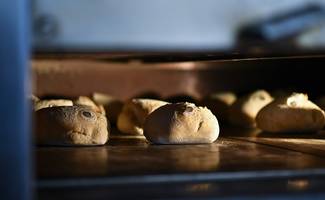
Prato bread
Prato bread represents the pride of our bakers! Its original recipe, handed down through generations, involves the use of carefully selected soft wheat flour, water and mother yeast. The ingredients are expertly blended until the characteristic elongated shape called "worm" is obtained. After a rest period, the dough is kneaded again and cut by hand, before being baked in the oven.
A peculiarity of Prato bread is that it does not require the addition of salt. In fact, if there is salt, it is not considered authentic Prato bread! This feature makes it very versatile and adaptable to different flavor combinations. Already in the sixteenth century, this high quality bread was present on the Florentine market stalls.
In addition to its classic form, Prato bread can be produced in different variations, but the most loved and widespread version is the Bozza, which is consumed with a wide range of accompaniments. It is important to note that you should not throw away leftover bread! You can reuse the stale Bozza in tasty and simple traditional recipes, such as panzanella, vegetables and tomato bread soup , and many other delicacies that each community has created with imagination and inventiveness.
Prato bread represents a culinary delight that goes beyond the simple loaf of bread, embodying a history and tradition that date back over time.



